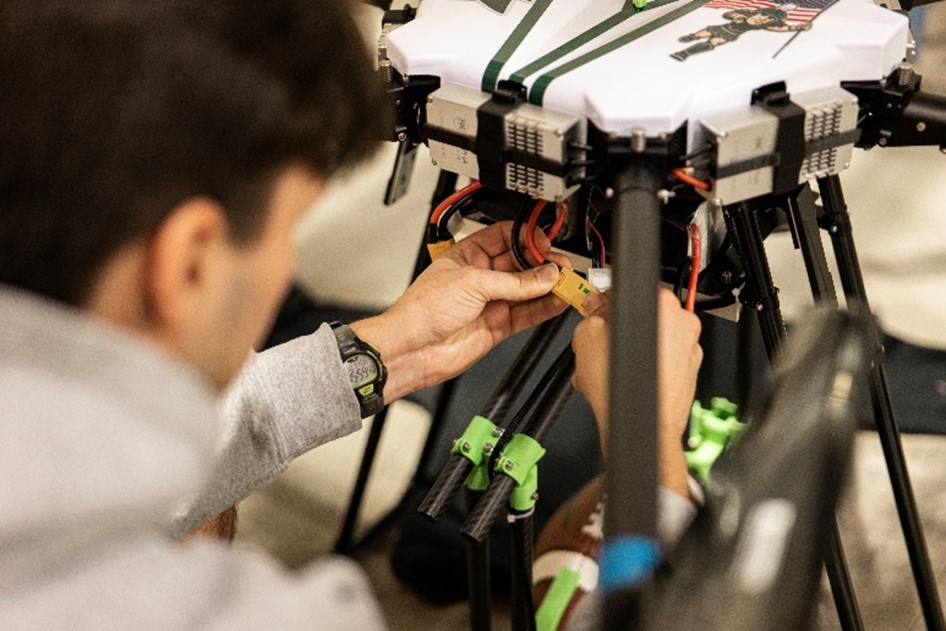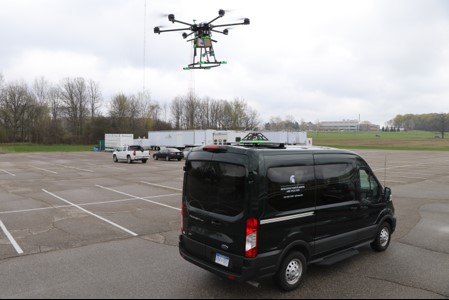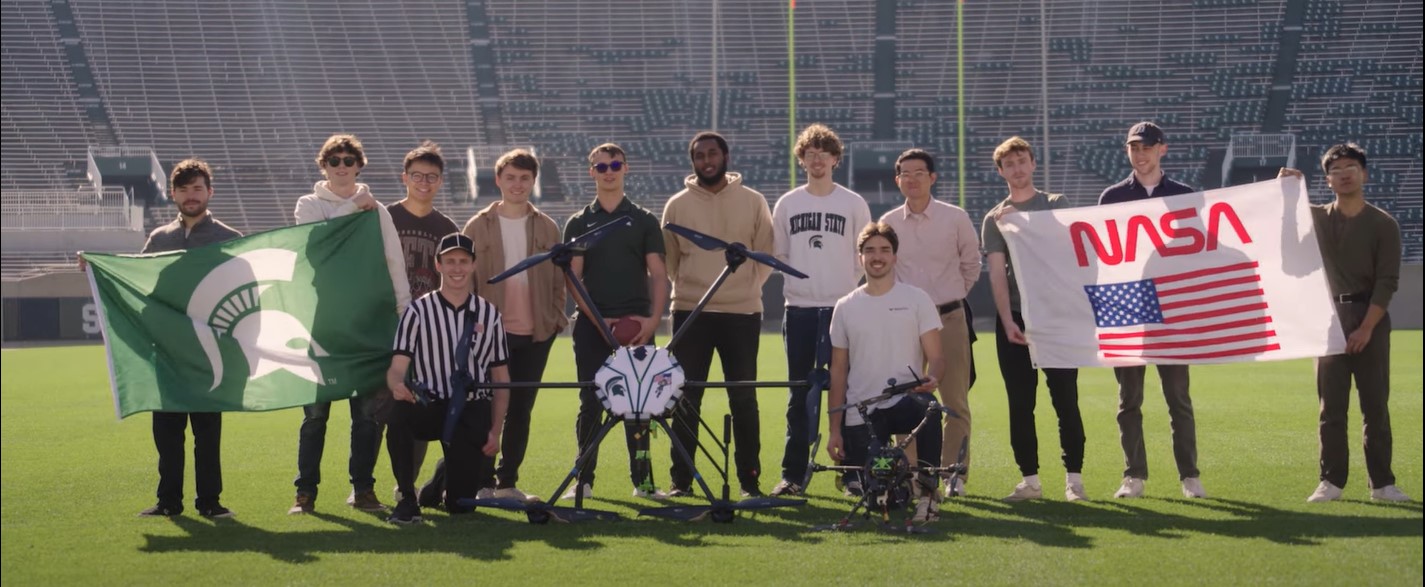MSU Engineering Students Develop Safe, Quiet, Affordable Solution to Last Mile Drone Delivery
Michigan State University (MSU) engineering students have innovated a last-mile drone delivery solution with a focus on safety, quietness and affordability, concluding a two-year research project funded by NASA. To successfully finalize the project, which kicked off in spring 2021, the MSU Aerial Intra-City Delivery Electric Drone (AIDED) team simulated a delivery trial with a truck-drone tandem system where a drone hitches a ride atop the truck before delivering a package.
The NASA-funded research project explored the feasibility of using existing transportation networks to enable drone delivery. Instead of flying directly to the end customer, this research centered around an autonomous delivery drone traveling on the roof of public transportation, where it is able to charge its battery and then launch from the platform once it is within a certain range of its destination to deliver a package.
The AIDED project focused on addressing three major challenges facing drone delivery.
- Safety: MSU’s solution can significantly decrease public risk associated with drone delivery by decreasing the amount of time spent navigating crowded areas by 20% compared to traditional drone delivery.
- Quietness: with the drone catching a ride on the roof of a vehicle for a portion of its operation, it would only fly as little as 10% of the time in comparison to traditional drone delivery.
- Affordability: this new solution extends drone delivery range without requiring a larger, heavier battery, also increasing the number of drones allowed per operator by enabling the pilot to focus on other vehicles while one is landed. Additionally, it creates new revenue streams for public transit by leasing roof space to drones, increasing overall affordability of the solution.

How it started
The idea originated when then-MSU engineering student Yuchen Wang envisioned utilizing the space on top of public transport vehicles to assist in drone delivery. Wang and a team of undergraduate students applied the concept to a project for their Energy Conversions and Power Electronics class in fall 2020 led by Woongkul (Matt) Lee, PhD, assistant professor of electrical and computer engineering. Lee’s assignment required students to explore and tackle a real-world engineering challenge aligned with one of six strategic areas included in NASA’s Aeronautics Research Mission Directorate (ARMD) guidelines.
The winning group’s proposal was based upon NASA’s Strategic Thrust 4, “Safe, Quiet, and Affordable Vertical Lift Air Vehicles,” addressing three main issues related to introducing drones to society.
Lee then guided the students toward NASA’s University Student Research Challenge (USRC) program, in which AIDED was selected for an $80,000 grant in April 2021 with an initial development timeline of one year that was later extended due to the COVID-19 pandemic.
Lee continued to serve as the faculty advisor for the team throughout the duration of the project.

Project milestones
After receiving the grant from NASA, the team grew from five members to 11.
The team was composed of three groups:
- Drone team responsible for building and flying the drone
- Latching and charging team responsible for connecting the drone to the vehicle it lands on
- Software team responsible for developing programs that provide the drone with directional instruction
During the fall 2021 semester, the team engineered a first-generation prototype drone called “SQUAB-1” along with the drone's unique latching and charging platform and a proprietary flight planning algorithm. By the end of the spring 2022 semester, SQUAB-1 was a fully functioning prototype, and the team began developing “HERMES,” a full-scale, heavy payload drone measuring 8 feet wingtip to wingtip. By the end of the fall 2022 semester, HERMES' proportional-integral-derivative (PID) tuning (its control algorithm) was complete. The students also completed flight planning simulations and verified its 20-pound payload capacity.
In spring 2023, the team completed development of the delivery drone and charging latch that is placed on a vehicle, and created a schematic diagram of the drone-side charging circuit. The team also developed two software applications for its pathfinding abilities. The first uses the Google Maps API to build a drone-bus delivery flight plan, and the other runs onboard the vehicle and is meant to help troubleshoot situations when the drone doesn't land correctly.

What’s next
Overall, the team saw extremely promising results with the drone's ability to autonomously land and latch with a sustained electrical connection. The AIDED research project marks a significant step forward in revolutionizing how goods are transported and delivered. The project successfully demonstrated the immense potential of drone technology in improving logistical operations and addressing noise, cost and safety concerns.
With the conclusion of this project, the research group will begin a Laser Energized Aerial Drone System (LEADS) project in August 2023 focused on sustained drone flight with optical wireless charging for wildfire detection with support of a second NASA grant.

